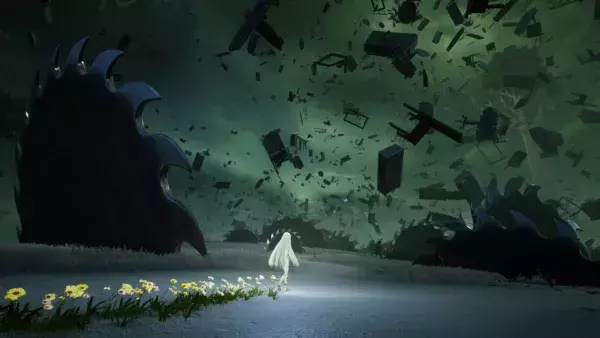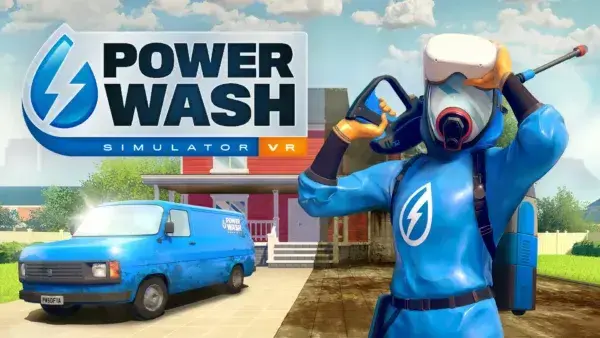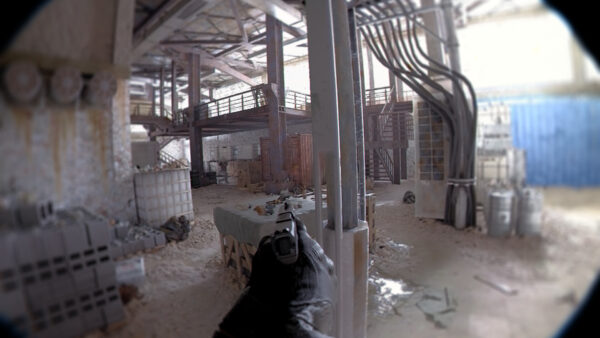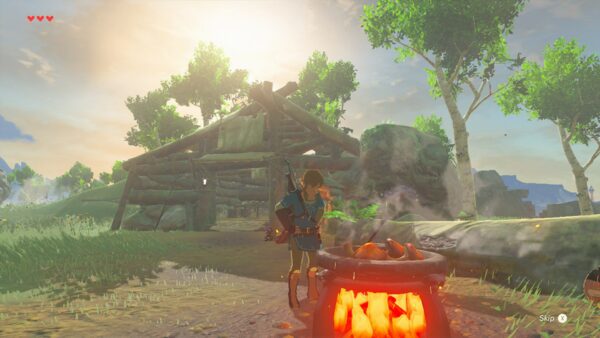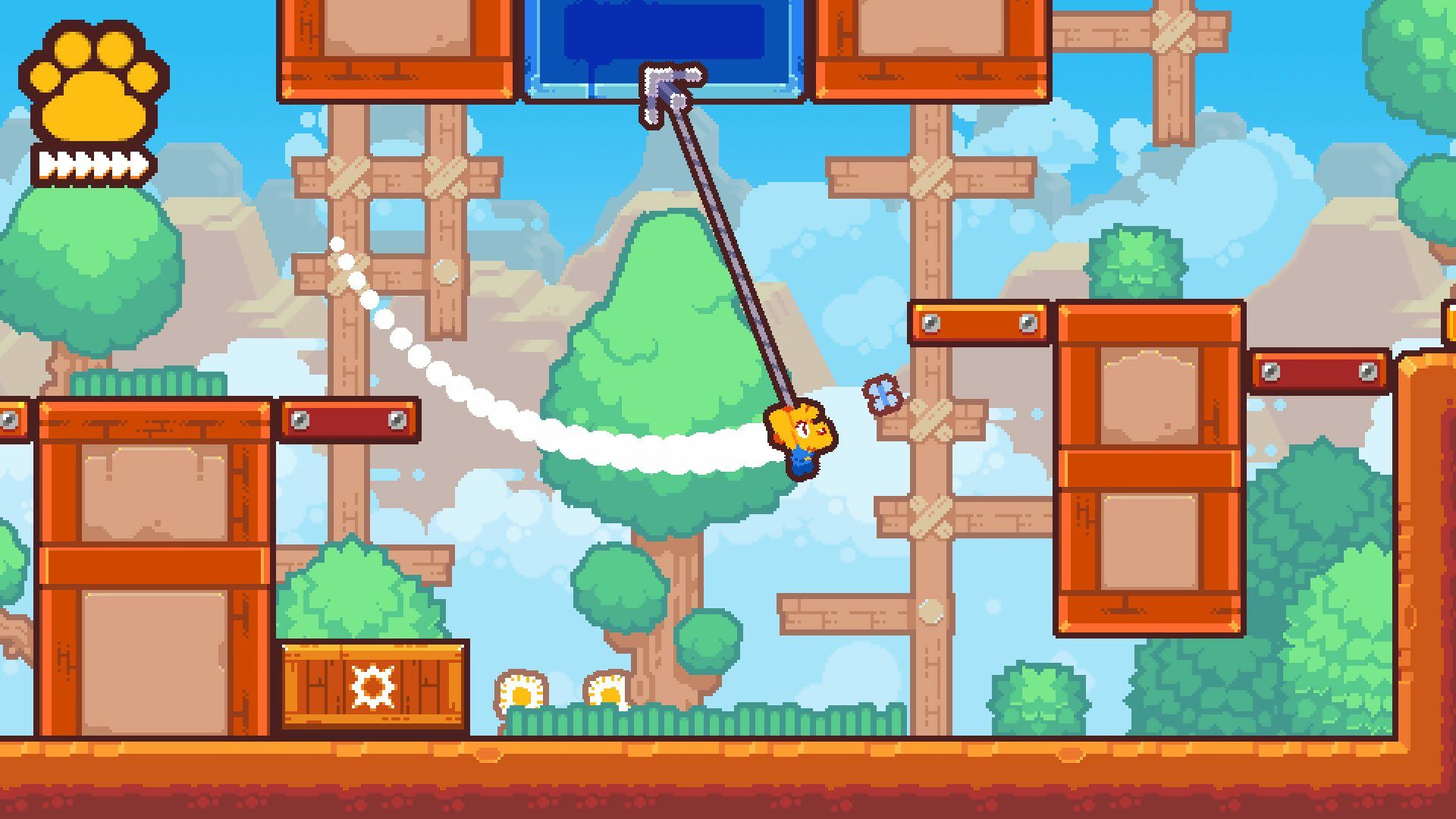
While every developer surely wants their game to be a success, there’s still plenty to learn even from a sales disappointment. For British artist and game designer Joseph Gribbin, the slow performance of his 2019 title, Magnibox, immediately informed his next project – the upcoming action-platformer, Grapple Dog. “Magnibox did OK on mobile,” he says, “but it kind of failed to get traction on social media or positive word of mouth. I reflected on it and tried to figure out why that was. The way I figure it, Magnibox lacked personality – a story, fun characters, cool environments, and so on… I knew whatever I was gonna work on next would have a lot of personality and you’d be able to tell what was going on even just looking at a ten-second clip on Twitter.”
Grapple Dog, then, is a wildly different game from Magnibox. Where the latter is a cool, abstract puzzler, Grapple Dog is a sprightly romp where its canine hero can swing from platform to platform, Bionic Commando style. The titular dog is named Pablo – based on Gribbin’s own, real-world companion – while the bold outlines and colours hark back to the Game Boy Advance platformers of his childhood, such as Sonic Advance and Yoshi’s Island.
Indeed, it was Nintendo’s 32-bit handheld that got Gribbin into designing games in the first place. “I started doing pixel art as a kid in MS Paint, downloading stuff off The Spriters Resource and recolouring them. The GBA was Nintendo’s most recent handheld at the time, and it kind of blew my mind that I could make something that looked like the art in video games. I kept making pixel art for years, and then as a teenager started playing around with GameMaker, really wanting to learn how to make my own games.”
It’s no coincidence, then, that Grapple Dog was made in GameMaker Studio 2, with Gribbin turning to Aseprite and Photoshop to generate its graphics. Like indie games such as Arclands and Neutronized’s Drop Wizard before it, Grapple Dog’s sprites have chunky outlines that not only give it a distinctive look, but also help the player immediately understand what’s a part of the background and what isn’t. “There was a constant process of adapting (the art style) to make sure the game was really readable,” Gribbin says. “For example, interactive objects have a harsh outline, background props have a fainter one, and backgrounds themselves have no outline at all. That makes sure the player can easily parse the game’s visuals.”

Although Gribbin’s doing the bulk of the development himself, he also has sound designer Damion Sheppard and musician Jazz Mickle lending their talents.
Having played the demo, we can safely say that Grapple Dog is as smooth, polished, and easy to parse as you’d expect for an arcade-style action game. Pablo’s grappling ability feels slick and intuitive to use, and it’s a mechanic that, Gribbin says, has taken considerable time to get just right. “I’ve been refining and iterating the core movement for basically the whole two and a half years of development so far,” he tells us. “There’s still a bunch of things to fix and tweak, even now.”
This being Gribbin’s first action game, having previously made the puzzle-platformer Spike City as well as Magnibox, he found adapting to the change of pace his biggest challenge. “All the games I’ve made previously have been puzzle games, even if they don’t look like it,” he explains. “They’re all about figuring out how to progress with a restrictive set of actions. With Grapple Dog, I had to learn how to design a moveset and how to design levels, where the player has a lot of freedom and where the fun doesn’t just come from ‘solving’ the level, but running around and exploring.”

Expect to face some imposing boss battles in Grapple Dog, including a very grumpy mechanical dinosaur.
So, we wonder, what’s the key to designing an engaging stage for an action-platformer? “I think about levels as a bit of a conversation between the designer and the player – as a designer, you ask a question, and then the player has to answer it. You might put a fruit just out of reach, and then the player has to figure out how to get up there and go get it. A good level, to me, is one where the player always understands what’s being asked of them, and where pulling that off feels really satisfying and fair.”
When we caught up with him for a chat in early November 2021, Gribbin was just in the final stages of development on his canine adventure. Grapple Dog is a simple, breezy game on the face of it, but it’s clear that Gribbin’s putting a lot of care into the smallest of details ahead of its release. “It’s close, but there’s still a lot to do,” he says. “The majority of the content is done, I’m just in the process of stitching everything together so the game flows nicely… Grapple Dog is the most ambitious thing I’ve ever made, and I’m so excited for people to play it.”
You can try out the demo of Grapple Dog, available now here.

Bionic Dog-mando, anyone? (You’re fired – Ed.)
Don’t quit the day job
Given Magnibox struggled to get the attention Gribbin hoped for in 2019, does he have any advice for other solo developers hoping to get their game noticed? “What I’ve tried to do is build an audience on social media for me as a developer, one that can follow me from game to game. I’m sharing regular updates on what I’m working on, engaging with people that like my work, trying to make video content that shows off the character and appeal of my game very quickly, and trying to be as open and honest as I can.
“As for somebody making their first game: please don’t quit your job, sell your house, take out a credit card, or bank on your first game being a big success. It’s very unlikely! If you can start, develop, and finish a project and release it, that’s a huge achievement in itself, and if you can keep doing that, hopefully you can start to build that audience. And if your game comes out and it doesn’t do the numbers you want, you’ve put more art and creativity out there in the world! That’s not really a failure, is it?”


